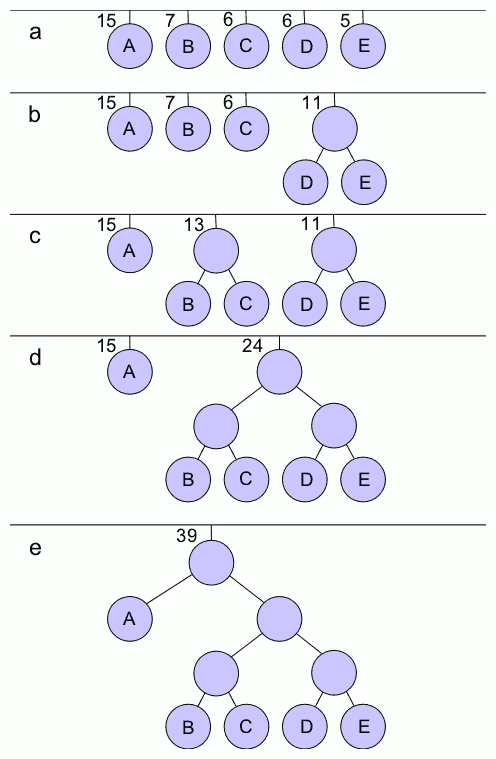|
Adaptive Binary Optimization
Adaptive Binary Optimization, (ABO), is a supposed lossless image compression algorithm by MatrixView Ltd. It uses a patented method to compress ''the high correlation found in digital content signals'' and additional compression with standard entropy encoding algorithms such as Huffman coding. External links * : Repetition Coded Compression For Highly Correlated Image Data * : Compressing image data Image compression {{telecomm-stub ... [...More Info...] [...Related Items...] OR: [Wikipedia] [Google] [Baidu] |
Lossless Data Compression
Lossless compression is a class of data compression that allows the original data to be perfectly reconstructed from the compressed data with no loss of information. Lossless compression is possible because most real-world data exhibits statistical redundancy. By contrast, lossy compression permits reconstruction only of an approximation of the original data, though usually with greatly improved compression rates (and therefore reduced media sizes). By operation of the pigeonhole principle, no lossless compression algorithm can efficiently compress all possible data. For this reason, many different algorithms exist that are designed either with a specific type of input data in mind or with specific assumptions about what kinds of redundancy the uncompressed data are likely to contain. Therefore, compression ratios tend to be stronger on human- and machine-readable documents and code in comparison to entropic binary data (random bytes). Lossless data compression is used in ... [...More Info...] [...Related Items...] OR: [Wikipedia] [Google] [Baidu] |
Entropy Encoding
In information theory, an entropy coding (or entropy encoding) is any lossless data compression method that attempts to approach the lower bound declared by Shannon's source coding theorem, which states that any lossless data compression method must have expected code length greater or equal to the entropy of the source. More precisely, the source coding theorem states that for any source distribution, the expected code length satisfies \mathbb E_(d(x))\geq \mathbb E_ \log_b(P(x))/math>, where l is the number of symbols in a code word, d is the coding function, b is the number of symbols used to make output codes and P is the probability of the source symbol. An entropy coding attempts to approach this lower bound. Two of the most common entropy coding techniques are Huffman coding and arithmetic coding. If the approximate entropy characteristics of a data stream are known in advance (especially for signal compression), a simpler static code may be useful. These static codes ... [...More Info...] [...Related Items...] OR: [Wikipedia] [Google] [Baidu] |
Algorithm
In mathematics and computer science, an algorithm () is a finite sequence of rigorous instructions, typically used to solve a class of specific problems or to perform a computation. Algorithms are used as specifications for performing calculations and data processing. More advanced algorithms can perform automated deductions (referred to as automated reasoning) and use mathematical and logical tests to divert the code execution through various routes (referred to as automated decision-making). Using human characteristics as descriptors of machines in metaphorical ways was already practiced by Alan Turing with terms such as "memory", "search" and "stimulus". In contrast, a heuristic is an approach to problem solving that may not be fully specified or may not guarantee correct or optimal results, especially in problem domains where there is no well-defined correct or optimal result. As an effective method, an algorithm can be expressed within a finite amount of spac ... [...More Info...] [...Related Items...] OR: [Wikipedia] [Google] [Baidu] |
Huffman Coding
In computer science and information theory, a Huffman code is a particular type of optimal prefix code that is commonly used for lossless data compression. The process of finding or using such a code proceeds by means of Huffman coding, an algorithm developed by David A. Huffman while he was a Sc.D. student at MIT, and published in the 1952 paper "A Method for the Construction of Minimum-Redundancy Codes". The output from Huffman's algorithm can be viewed as a variable-length code table for encoding a source symbol (such as a character in a file). The algorithm derives this table from the estimated probability or frequency of occurrence (''weight'') for each possible value of the source symbol. As in other entropy encoding methods, more common symbols are generally represented using fewer bits than less common symbols. Huffman's method can be efficiently implemented, finding a code in time linear to the number of input weights if these weights are sorted. However, althou ... [...More Info...] [...Related Items...] OR: [Wikipedia] [Google] [Baidu] |

